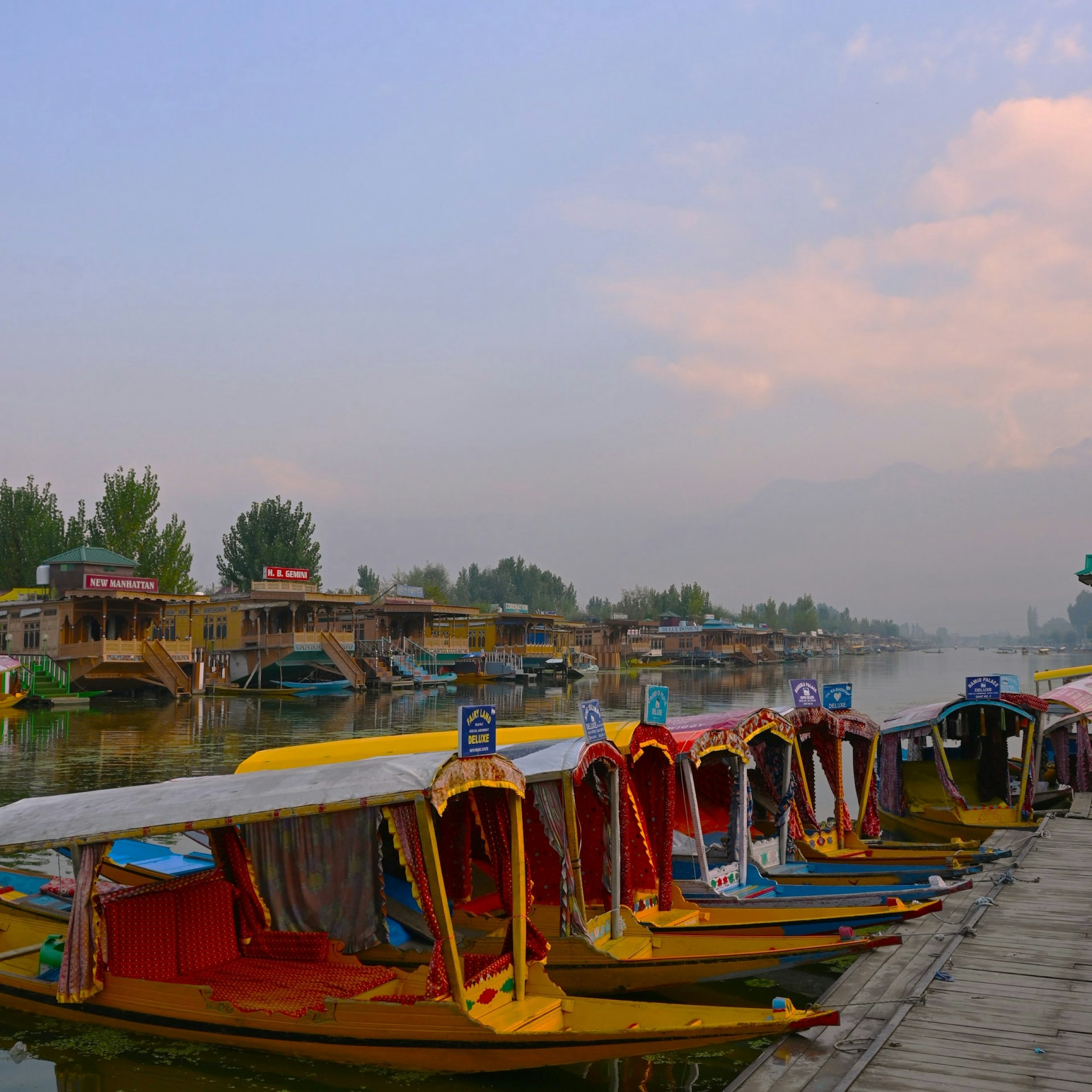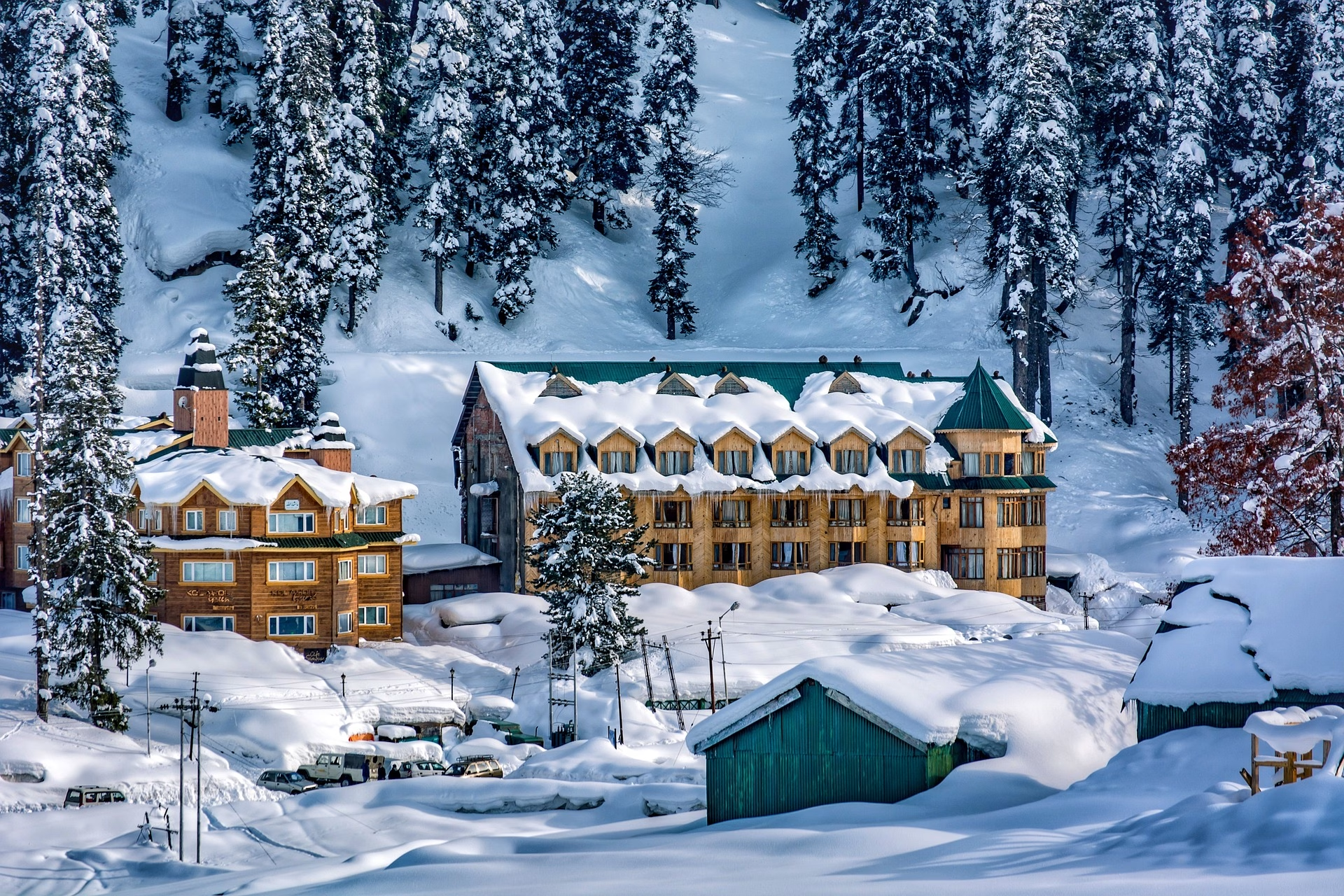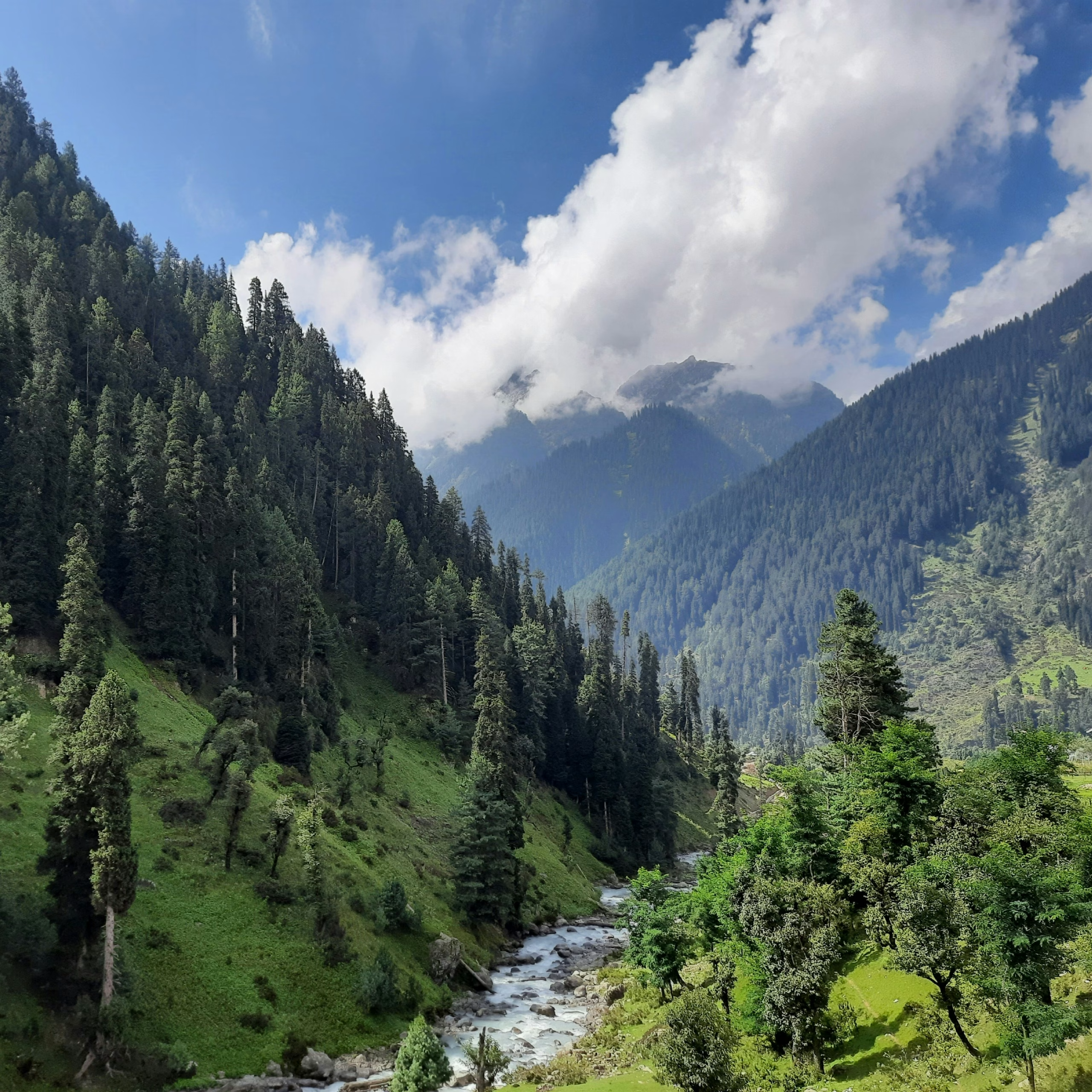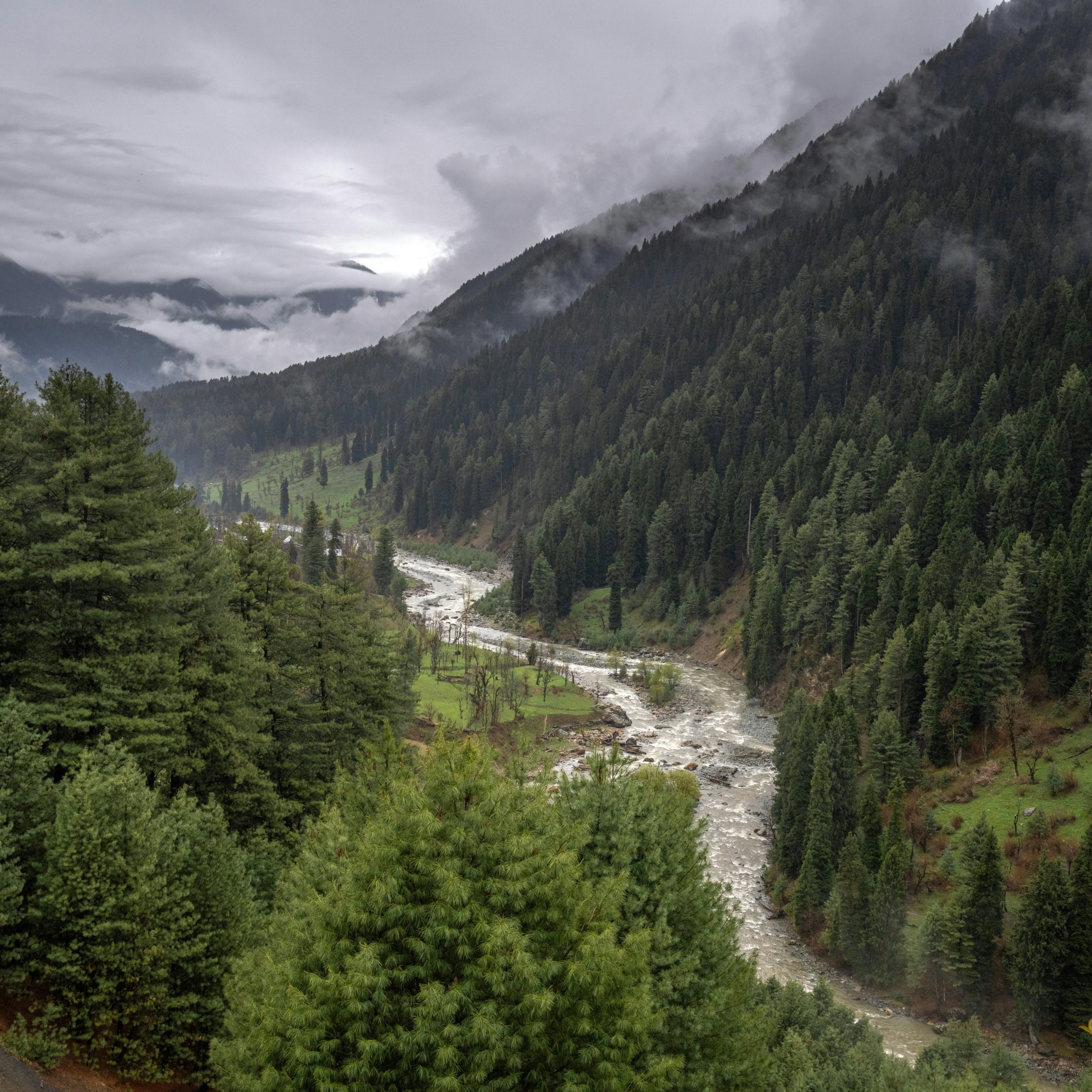4 Days 3 Nights
Daily Tour
50 people
___

Upon arrival, check into your hotel at 11:00 am. In the afternoon, set out to explore the iconic Dal Lake. Consider taking an optional Shikara ride to admire the floating gardens and intricately designed houseboats. Afterwards, visit Nishat Bagh and Shalimar Bagh, two magnificent Mughal gardens offering breathtaking views of the mountains and the lake.
Meals: Dinner
Night: stay at the hotel in Srinagar.

After breakfast, proceed to Gulmarg, about 50 km from Srinagar. Once there, you can enjoy various adventure activities, such as skiing, snowboarding, and trekking (depending on the season). The Gulmarg Gondola, one of the world's highest cable cars, offers a two-phase journey. The first phase ascends from Gulmarg to Kongdoori, showcasing lush forests and meadows. The second phase continues to Apharwat Peak, which provides breathtaking views of snow-clad mountains.
Meals: Breakfast and Dinner
Night: Stay at the hotel in Srinagar

Early in the morning, depart for Pahalgam, famously known as the 'Valley of Shepherds,' located at the meeting point of the Lidder River and Sheeshnag Lake. En route, visit the ancient Awantipora ruins, a 1100-year-old temple dedicated to Lord Vishnu. Continue your journey to Baisaran, a charming village nestled amidst pine and fir forests.
Meals: Breakfast and Dinner
Night: stay at the hotel in Pahalgam.

After breakfast, visit the renowned Shankaracharya Temple, perched atop a hill, offering sweeping views of Srinagar. Continue to the Hazratbal Mosque, a significant religious landmark in the region. Later, explore the Old City, wandering through its narrow lanes, vibrant bazaars, and historic architecture. In the evening, proceed to the airport for your flight back home.
Meals: Breakfast
Night: NA
| Location | Places to visit |
| Srinagar | Nishat Bagh, Shalimar Bagh, Pari Mahal, Shankaracharya Temple, Tulip Garden, Dal Lake, Etc. |
| Gulmarg | Gulmarg Gondola ride, Golf Course, Drung waterfall, Children's park, etc. |
| Pahalgam | Baisaran, Chandanwari Valley, Betaab Valley, Aru Valley etc. |
Note:
Unexpected events or government restrictions may cancel the tour. In such cases, you can reschedule your dates; however, no refund will be provided.
The Srinagar Gulmarg Pahalgam tour offers an unforgettable experience, blending Kashmir’s natural beauty and cultural richness. Begin your journey in Srinagar, where you can explore the serene Dal Lake, iconic Mughal gardens, and vibrant markets. From there, head to Gulmarg to enjoy the scenic Gondola ride and panoramic mountain views. Continue to Pahalgam, the ‘Valley of Shepherds,’ known for its lush meadows, picturesque rivers, and tranquil surroundings.
Pahalgam
Pahalgam is a hill station located in the union territory of Jammu and Kashmir, India. It is situated at 2,130 meters (7,000 ft) above sea level and is known as the Valley of Shepherds. Pahalgam is known for its breathtaking views of the Himalayan Mountains and is a popular destination for trekking and other adventure activities. The town of Pahalgam was first known as `Bail Gham’ meaning. The Village of Shepherds’. It is said that the great sage Vyasa visited the place and blessed it with his presence. The place is also known for its religious significance, as Lord Shiva is believed to have meditated as a bull for a long time. Pahalgam is surrounded by lush green hills, valleys and meadows, making it an ideal place for trekking and other adventure activities. The town is located on the banks of the Lidder River, a tributary of the Jhelum River.
The Lidder Valley is also known for its beautiful lakes and glaciers. The main attraction of Pahalgam is the Amarnath cave, considered one of the holiest sites in Hinduism. Thousands of pilgrims visit the place yearly to pay their respects to Lord Shiva. The pilgrimage to the Amarnath cave is only possible during Shravan (July-August). Apart from the Amarnath cave, Pahalgam offers many other attractions, such as the Aru Valley, Betaab Valley, Chandanwari, and Baisaran meadows. Aru Valley is known for its picturesque landscape,e and Betaab Valley is popular for its religious significance. Chandanwari is the starting point for the Amarnath Yatra, while Baisaran meadows offer spectacular views of the Himalayan range. Pahalgam is also known for its rich cultural heritage. The town has several traditional Kashmiri and Pahari villages and ancient temples and shrines. The inhabitants of the city are mainly Muslims, but there are also a few Hindus and Sikhs living in the area. The city is also known for its various festivals and fairs, the most popular being the Baisakhi fair, which is held every year in April. The fair is celebrated with great enthusiasm and is attended by people from all over the country. Pahalgam is an excellent place for a peaceful and tranquil holiday. The town is filled with beautiful scenery, religious sites and ancient monuments, making it a great place to explore. Pahalgam is also a great place to experience the culture and traditions of the local people, and for those looking for adventure, it is a great place to go trekking and rafting.
Valley of Shepherds: Pahalgam
The Valley of Shepherds was a picturesque paradise nestled in the hills of the kingdom’s northern region. It was a place of peace and tranquillity where the people of the area came to relax and enjoy the beauty of nature. The valley was a landscape of rolling hills and lush green meadows dotted with grazing sheep and cattle. The meadows were filled with wildflowers in the spring and the summer, and the sweet smell of mountain air filled the air. The sky was a deep blue, and the sun shone brightly upon the people. The people of the valley were hardworking, humble people. They were shepherds living in the valley for generations, and their livelihood depended on the sheep and other livestock they kept in the valley. They were also farmers, growing crops in the valley’s rich soil to provide sustenance for themselves and their families. The people of the valley were friendly and welcoming. They welcomed travellers from near and far and were always willing to share a meal and a story. This was where families gathered around the fire and shared stories of days gone by, and laughter filled the air. The valley was also home to a variety of wildlife, and the people of the valley enjoyed watching the birds and other animals that inhabited the area. It was a place of beauty and peace, and the people of the valley felt blessed to live in such a paradise. The valley of shepherds was a place of solace, a place of refuge, and a place of joy. It was a place where the region’s people could escape the world’s troubles and find peace and contentment. It was a place of beauty and harmony, and it was a place where the people of the valley could discover the joy and happiness that life had to offer.
Lidder and Sheeshnag Lake
The Sheeshnag Lake is nestled in the picturesque Pir Panjal Range of the Himalayas in the Indian state of Jammu and Kashmir. It is one of the most beautiful and serene lakes in the region. It is known for its crystal clear waters and is surrounded by lush green hills and snow-capped mountains. The lake is well known for its unique shape, which is in the form of a half-moon. It is believed to be formed from a large glacier that melted and created a significant depression in the ground. It is also believed that in ancient times, the lake was a holy site for worshipping Lord Sheeshnag, the four-headed snake god in Hindu mythology. The lake is situated at an elevation of 11,500 feet and is surrounded by hills of the same height. It has a maximum length of 4 km and a maximum width of 2 km. The lake is surrounded by a thick forest home to various animal species, including leopards, bears, and wild boars. The lake is also a popular destination for trekkers, as the trail to the lake passes through the forests and the snow-capped mountains. The trek is of medium difficulty and is suitable for all levels of trekkers. It offers breathtaking views of the surrounding areas and the lake itself.
The lake is also a paradise for fishing enthusiasts. It is home to various fish, including brown trout and mahseer. Fishing is usually done by boats, which can be hired from the local village near the lake. The lake is also home to a small shrine dedicated to Lord Sheeshnag, which is said to have healing powers. Devotees from all over the region pilgrimage to the lake and offer their prayers at the shrine. The lake is also a popular spot for camping and picnics. Several campsites are located nearby, some providing basic amenities like bathrooms and kitchens. The lake is also a great spot to enjoy the beauty of the sunrise and sunset. The Lidder Valley is another popular destination just a few kilometres from the lake. The valley is surrounded by tall pine trees and is filled with lush green meadows and snow-capped mountains. It is a perfect spot to enjoy nature and the serenity of the valley. The area around the lake is also home to several villages, including Pahalgam, the closest town to the lake. The Sheeshnag Lake is an excellent spot for a peaceful and tranquil holiday away from the hustle and bustle of the city. It is a place that offers stunning views and a chance to experience the beauty of nature. The lake is truly a hidden gem and is a must-visit for anyone looking to explore the beauty of the Himalayas.
Baisaren
Baisaren is a small village in the Kargil district of Jammu and Kashmir. It is situated in the Suru Valley, near the Line of Control, a de facto border between India and Pakistan. The village is home to around 500 people, mainly of the Shia Muslim faith. Baisaren lies in a semi-arid region and is surrounded by towering mountains. It is located at an altitude of 3,000 meters (9,800 ft) and is one of the highest villages in the Kargil district. The village has a temperate climate, with cold winters and mild summers. The villagers of Baisaren primarily depend on agriculture for their livelihood, and many also work as labourers in the nearby towns of Kargil and Drass. Most of them are involved in producing wheat, barley, peas, and potatoes. Other crops grown in the area include maise, millet, and mustard. Livestock rearing is also an essential source of livelihood, with sheep, goats, cows, and yaks being commonly found. The village is connected to the nearby towns and cities by a network of roads. The nearest railway station is at Kargil, located at a distance of 70km. The nearest airport is at Srinagar, situated at 250km. The people of Baisaren are very hospitable and warm. They are very religious and observe all the Islamic festivals, such as Ramadan, Eid-ul-Fitr, and Eid-ul-Adha. The traditional attire of the men is the phera,n and the women wear the salwar kameez. Baisaren is known for its unique culture and traditions. The villagers are fond of folk music featured in weddings and other festivities. The local cuisine is known for its non-vegetarian dishes such as rogan josh, yakhni, and tabak maaz. The village has several ancient monuments and structures, such as the Rangdum Monastery, the Suru Fort, and the Kargil War Memorial. These monuments are a reminder of the region’s rich cultural heritage and history. Baisaren is a great place to visit and explore. It offers a unique insight into the life and culture of the people of Jammu and Kashmir and is a great place to experience the beauty of the Himalayas.
Shankaracharya Temple
The Shankaracharya Temple is a Hindu temple in Jammu and Kashmir, India. It is perched atop Shankaracharya Hill and is known as the Takht-e-Sulaiman. The temple is said to have been built on the spot where Adi Shankaracharya experienced enlightenment. According to legend, Lord Shiva visited him while meditating on the hill, revealing the universe’s secrets and the Vedas’ knowledge. This inspired Shankaracharya to write his famous commentaries on the Upanishads, the Brahma Sutras, and the Bhagavad Gita.
The temple is built on the hill’s summit, surrounded by a large lake. It comprises two parts: the inner sanctum, the ‘Garbhagriha,’ and the outer hall, the ‘Mandapa.’ The inner sanctum has a small shrine dedicated to Lord Shiva, and the outer hall has a large open courtyard with a raised platform where devotees can listen to discourses and religious lectures.
The temple is open on all four sides and surrounded by four walls. The walls are decorated with intricate carvings depicting various Hindu gods and goddesses. A small door in one of the walls provides access to the inner sanctum.
The temple has a rich collection of sculptures, artefacts, and inscriptions. The sculptures are mainly of Shiva, Parvati, and their son Ganesh. The inscriptions are mainly in Sanskrit and are believed to be from the 8th century CE.
Weather conditions
Srinagar:
The weather in Srinagar is usually pleasant and warm throughout the year, with temperatures ranging from 4°C to 28°C. Summers (March to September) are warm, with occasional thundershowers and temperatures ranging from 14°C to 28°C. Winters (October to February) are cold, with temperatures ranging from 4°C to 15°C.
Gulmarg:
Gulmarg experiences a temperate climate, with distinct seasons throughout the year. Winters (November to February) are cold and snowy, ideal for skiing, with temperatures often dropping below freezing. As the meadows bloom, Spring (March to May) brings pleasant weather, with temperatures ranging from 5°C to 15°C. Summer (June to August) is mild and comfortable, with temperatures between 9°C and 24°C, perfect for outdoor activities. Autumn (September to October) sees cooler temperatures and beautiful fall foliage.
Pahalgam:
The weather in Pahalgam is usually pleasant and cold throughout the year, with temperatures ranging from -2°C to 25°C. Summers (March to September) are warm, ranging from 10°C to 25°C. Winters (October to February) are cold, with temperatures ranging from -2°C to 10°C.
The best places to visit in Srinagar are the iconic Dal Lake, the Mughal Gardens, the Jama Masjid, the Shankaracharya Temple, the Hazratbal Mosque, the Pari Mahal, the Hari Parbat Fort, the Chashme Shahi Garden, the Wular Lake, the Tulip Garden and much more.
Some of the must-see attractions in Srinagar include the Dal Lake, Mughal Gardens, Shankaracharya Hill, the old city of Srinagar, Hazratbal Shrine, Jama Masjid, Chashme Shahi, and Pari Mahal. Other attractions include the nearby Gulmarg ski resort, Aru Valley, and the Nishat and Shalimar Bagh gardens.
Some popular local dishes in Srinagar include:
Rogan Josh: Made from lamb or goat meat cooked in browned onions, garlic, ginger, and spices.
Kashmiri Dum Aalu: This traditional dish has potatoes, yoghurt, and spices.
Yakhni: This dish contains yoghurt, meat, and spices.
Modur Pulav: This sweet and savoury dish has saffron, crushed nuts, and fruits.
Shufta: This traditional sweet dish combines nuts, fruits, and sugary syrup.
Tabakmaaz: This dish is made with lamb ribs that have been fried until crisp. 9. Kashmiri Kebab: This dish has minced meat, onions, and spices. 10. Korma: This dish is made with yoghurt, cream, and various spices.
Srinagar is approximately 290 km (180 miles) from Jammu. It takes about 5-6 hours to drive from Jammu to Srinagar.
Yes, there are several popular historical sites to visit in Srinagar, including the Mughal Gardens, the Hazratbal Shrine, the Shankaracharya Temple, the Jama Masjid, the Hari Parbat Fort, the Pari Mahal, and the Martand Temple.
Yes, there are several. These include the Dachigam National Park, the Gulmarg Wildlife Sanctuary, the Overa Aru Sanctuary, the Kishtwar National Park, and the Himkund Wildlife Sanctuary.
The best way to experience Srinagar's local culture is to explore its markets, sample its traditional cuisine, and take shikara rides on Dal Lake.
Yes, there are several religious sites and places of worship in Srinagar, such as Jama Masjid, Shankaracharya Temple, and Hazratbal Shrine.
The distance from Pahalgam to Srinagar is approximately 97 kilometres (60 miles).
Yes, there are many places to visit in Pahalgam:
Yes, carrying alcohol to Pahalgam is illegal and prohibited. It is also unlawful to consume alcohol in public place
Yes, several special activities can be enjoyed at night in Pahalgam. These include stargazing, bonfire parties, horse riding, and the traditional Kashmiri dance form, Rouf. Additionally, many night safaris and treks are available in the area.
Leave a review